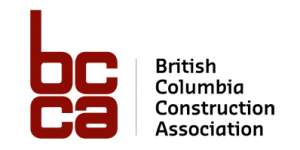Construction File:
Risks to Owners of In House Construction When Projects are Over Budget
If the lowest compliant bid exceeds the Owner’s budgeted amount, and the Owner is unwilling or unable to award a contract at the bid price but is unwilling to abandon the project, the following guidelines for a course of action are recommended:
- Where the amount by which the bid price must be reduced is less than 15% of the lowest compliant bid, the first step should be to negotiate with the lowest compliant bidder (only) to identify changes in the scope or quality of the work and a corresponding bid price reduction. Where the Owner and lowest compliant bidder can agree on acceptable changes and a corresponding bid price reduction, the changes should be documented as a post-bid addendum and the contract, based on the negotiated reduced price, should be awarded to the lowest compliant bidder. However, where acceptable changes and a corresponding bid price reduction cannot be successfully negotiated with the lowest compliant bidder, the second step should be to re-bid on modified Bid Documents under a new bid call. Negotiations should be limited exclusively to the lowest compliant bidder.
- Where the amount by which the bid price must be reduced exceeds 15% of the lowest compliant bid, the bidcalling authority may immediately undertake either of the preceding steps described above, at its discretion. That is, the Owner may negotiate with the lowest compliant bidder first to re-bid on modified Bid Documents without any attempt to negotiate.
Re-bidding should be avoided whenever possible because of the additional time and costs incurred by all parties. Where a re-bid is unavoidable, the Bid Documents should be sufficiently modified to achieve a reduced bid price that will be acceptable to the Owner.
A standard ‘privilege clause’ in the bidding requirements would give the Owner the right to not accept any bid, thereby permitting the Owner to either abandon the project or reject all bids, and subsequently invite a re-bid on modified Bid Documents under a new bid call. However, since it is recommended that the Owner negotiate with the lowest compliant bidder in some circumstances, it is important that the bidding requirements include a clause giving the Owner, if necessary, the right to negotiate a reduced price with the lowest compliant bidder.
The risks for Owners to convert to in house forces when a project is over budget are:
- The trade prices received by the prime contractor are proprietary to that prime.
- When the Owner takes on this role they become a NON preferred Owner by the industry. Future projects will be viewed in a different light. See Construction File of January 2006, Maximizing the Competitive Bid.
- The Owner may not be addressing the same General Conditions of the prime contract as the prime contractor.
- Is it really under budget when the final price comes in i.e. all direct costs and overhead accounted for?
- A change in contracting structure will impact the relationship with the consultants and may result in increased fees.
- The Owner loses the benefit of a fixed price contract and now has to absorb labour and material escalation.
- The Owner must have in-house expertise to evaluate tenders and procedures.
- Does the Owner understand Division 1 requirements i.e. safety, insurance, contract security, shop drawing review, maintenance manuals?
- The value of the Superintendent is negated; who does the on-site coordination, job scheduling, project management, material procurement etc?
- Owner now has safety responsibilities as Prime Contractor of a multiple employer worksite. If an accident occurs it may impact WCB rates and may move the Owner from one class of WCB rates i.e. supervisory staff to construction rates.
- Owner is now responsible for regular quality control expertise, coordinating and administering latent defects, and warranty costs.
- Owner is now taking on the prime contractors risk with respect to trade contractor failure. This risk now carries upwards in the Owner’s governing structure i.e. to a Board of Directors.
- The Owner assumes the insurance and bonding responsibilities which should be maintained for the project.


